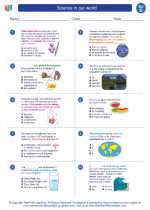Nerves: Explained
Nerves are an essential part of the human body's communication system. They are the pathways along which signals travel between the brain, spinal cord, and the rest of the body. Nerves are responsible for transmitting sensory information, controlling muscle movements, and regulating bodily functions such as heart rate and digestion.
Anatomy of Nerves
Nerves are made up of specialized cells called neurons. Neurons have a cell body, dendrites that receive signals from other neurons, and an axon that transmits signals to other cells. The axon is covered by a fatty substance called myelin, which helps speed up the transmission of signals along the nerve.
Types of Nerves
There are three main types of nerves in the human body:
- Sensory Nerves: These nerves carry signals from sensory organs, such as the eyes, ears, and skin, to the brain and spinal cord.
- Motor Nerves: These nerves carry signals from the brain and spinal cord to the muscles, allowing for voluntary movements.
- Autonomic Nerves: These nerves regulate involuntary bodily functions, such as heart rate, digestion, and breathing.
Functions of Nerves
Nerves play a crucial role in a wide range of bodily functions, including:
- Sensory Perception: Nerves allow us to perceive and respond to the environment through our senses.
- Muscle Control: Nerves enable us to move our muscles voluntarily and involuntarily.
- Organ Function: Nerves regulate the function of internal organs and bodily systems, ensuring homeostasis.
Study Guide: Nerves
Here are some key points to remember when studying nerves:
- Identify the basic structure of a neuron, including the cell body, dendrites, and axon.
- Understand the role of myelin in speeding up nerve signal transmission.
- Differentiate between sensory, motor, and autonomic nerves, including their functions and pathways.
- Explain the importance of nerves in sensory perception, muscle control, and organ function.
By understanding the anatomy and functions of nerves, you can gain a deeper appreciation for the complex communication network that allows the human body to function effectively.
.◂Science Worksheets and Study Guides Fourth Grade. Science in our world

 Worksheet/Answer key
Worksheet/Answer key
 Worksheet/Answer key
Worksheet/Answer key
 Worksheet/Answer key
Worksheet/Answer key
 Vocabulary/Answer key
Vocabulary/Answer key
